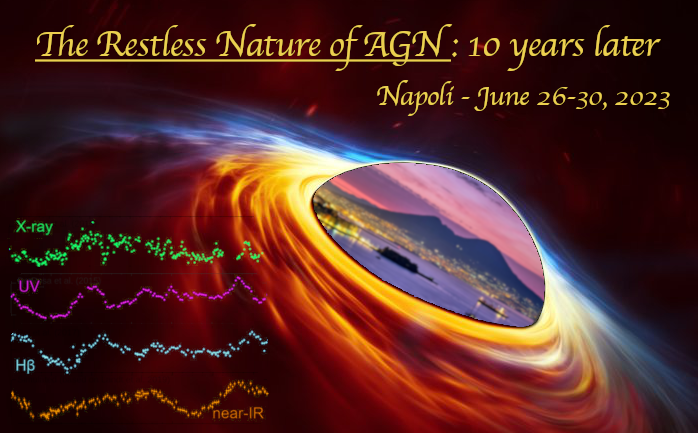Speaker
Description
The hard X-ray emission universally found in AGN is believed to be produced in the so-called corona, of which the physical nature remains unclear. A fundamental parameter is the coronal temperature ($T_{\rm c}$), which could be measured by fitting the high-energy cutoff ($E_{\rm cut}$) in the hard X-ray spectra. With multiple NuSTAR observations, we search for the variation of $T_{\rm c}$/$E_{\rm cut}$ in individual sources. We get a small sample of several sources, which demonstrate an interesting non-monotonic variation pattern, with a break point of the photon index $\Gamma$ detected. Sources are found to be “hotter-softer-when-brighter” at $\Gamma < 2.05$, but turn into “cooler-softer-when-brighter” at $\Gamma > 2.05$. Such a behavior indicates that multiple mechanisms, for instance, changes of the coronal geometry and the cooling efficiency, are contributing to the X-ray variability in AGN. Meanwhile, we are also interested in how $T_{\rm c}$/$E_{\rm cut}$ differs from one source to another. We measure the $T_{\rm c}$/$E_{\rm cut}$ in a large sample and investigate the correlations between $T_{\rm c}$ and other parameters (photon index $\Gamma$ and Eddington ratio). A strong positive correlation between $T_{\rm c}$ and Γ is detected, while none between $T_{\rm c}$ and Eddington ratio. In other words, counter-intuitively, hotter coronae tend to produce softer spectra, while the accretion rate is not a primary determinant of the coronal temperature.

